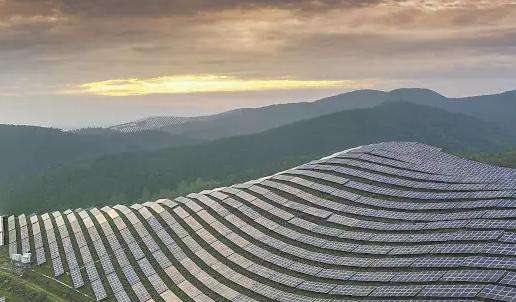Solar panelsplaced on the roof do not radiate.
Solar panels placed on the roof are used for the production of photovoltaic energy. During the entire electricity generation process, no materials are consumed, there is no mechanical rotation and no emissions, including carbon dioxide, are made. issued. The exhaust gas will not emit any waste water or residue, there will be no pollution, there will be no noise, and it will not produce harmful radiation to the human body.
Solar energy is widely distributed and there is no risk of depletion for a long time. It is a green energy that can be used by humans. Compared with other types of power generation technologies, solar photovoltaic power generation is an ideal choice and is of great importance in alleviating the pressure on human resources.
Villa Master provides you with local house construction policies, house construction drawings and villa design drawings;
Villa appearance rendering service, with thousands of popular drawings including you can choose.
Villa Master
Is it okay to place the solar panels on the balcony through the glass?
There are really no conditions. It is also possible to put them down. it is flat, but its effectiveness is reduced.
In theory, solar panels should be perpendicular to the incident rays of sunlight. Some solar farm panels are tracker type and can follow the movement of sunlight at a certain angle. However, most solar panels installed on many buildings are fixed and can be installed vertically or horizontally. Therefore, it doesn't matter if you lay it flat, just note that its puOutput power should be reduced appropriately (for example, if it's rated at 100W, you should probably only consider 70W).
What are the advantages and disadvantages of installing solar panels on the roof?
It can receive sunlight through the glass. However, the received sunlight is definitely not very good and the conversion rate. It may also be It will fall, so it is best to avoid obstructions as much as possible. The main market for power generation is crystalline silicon solar cells and thin film solar cells, both of which have their own advantages and disadvantages. Crystalline silicon solar cells have relatively low equipment costs, but high cell consumption and costs, but the photoelectric conversion efficiency is also high, which makes them suitable for power generation.ricity in outdoor sunlight;
Thin-film solar cells have relatively high equipment costs, but low power and battery costs. However, the photoelectric conversion efficiency is more than half of that of crystalline silicon cells, but the low light effect is also very good. ordinary light, like on a solar cell calculator.
Should solar panels be placed at a 45 degree angle?
There are pros and cons.
1. Advantages of installing solar panels on the roof:
1. If solar power generation panels are installed on the roof, solar energy resources can be used efficiently. It can generate electricity, which can save electricity. Nowadays, the state provides subsidies for the installation of production panelsof electricity. Thanks to solar energy production, the usual electricity consumption will be less, saving money on your home's electricity bill.
2.Rooftop solar panels are relatively simple. Typically, a few workers can install them in half a day.
2. Disadvantages of installing solar panels on the roof:
1. The investment in installing solar panels is relatively large. For some families, this may factor in the cost of installation. the price will be high and they will not accept it.
2. This type of solar energy production panel is installed directly on the roof. It may be exposed to wind and sun for a long time and cause corrosion problems.
3. After all, solar panels are obtained from solar energy. Only by using solar energy can we produce electricityctricity, so they can only be used on sunny, cloudy or sunny days. the sun is not particularly bright, electricity consumption will be affected.
4. During installation, holes must be drilled on the roof to penetrate the roof. Unreasonable installation at a later stage will cause roof leakage problems.
It is more efficient if the normal line of the solar panel points towards the sun. The best way is to keep your normal line pointed toward the sun. But the cost is too high.
If the solar panel is fixed, the installation angle should ensure that when the sun reaches its highest point, its normal line points toward the sun.
The height to which solar energy rises is related to local latitude. At the equator, it rises to 90 degrees, so the equator is installed towards the zenith. In mid-latitude areas it is still possiblee to place it around 45 degrees. In polar regions, it faces the horizon.
A simple sentence is that the solar panel installation elevation angle = 90 degrees minus the local latitude.














